How to plant zucchini in open ground with seeds?
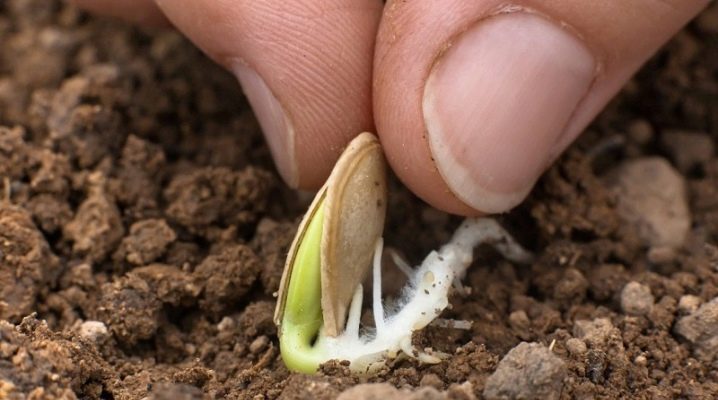
Many gardeners grow zucchini. These are healthy and tasty vegetables, from which you can prepare a huge variety of dishes. There are many ways to grow this culture. In today's article, we will learn how to plant zucchini in open ground with seeds according to all the rules.
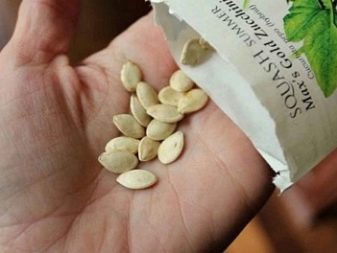

Sowing dates
If it is planned to plant high-quality and healthy zucchini in the local area, it is important to adhere to the optimal sowing dates. It is worth considering that the vegetables in question, like any pumpkin seeds, are very thermophilic. They are not designed for cool soils and can be very severely affected by returning spring frosts. For this reason, the timing of planting crops in open beds primarily depends on the air temperature. Given the thermophilicity of zucchini, it is advisable to plant them in open soil only after warm days are "firmly" established, there will not be the slightest threat of frost arrival.
At the same time, the soil layer on the site must be sufficiently heated - not lower than 12 degrees Celsius. To such parameters, the soil should be warmed up to a depth of at least 8 cm. In the middle zone of the country, as well as in the Moscow region, a comfortable time for planting comes around the end of May - beginning of June. If we are talking about the southern regions, then here the culture is allowed to sow earlier than the indicated dates. In the northern regions, vegetables are planted later.
In any case, it is not recommended to rush to sow seedlings in the beds. It makes sense to wait a week or a week and a half to be 100% sure that the seedlings will not suffer.
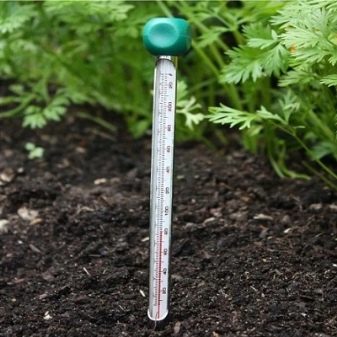

Where can you plant?
The planned planting of zucchini seeds should be carried out in suitable locations. Also, open and sufficiently illuminated areas on the site are best suited. Areas should not be shaded by surrounding buildings or fences. Excessive shade should not be created by too dense trees. In addition, the landing zone should not be blown through by excessively frosty winds. It is important to ensure that the planting soil has an optimal level of softness. The earth should freely absorb liquid, but not retain it.
It is allowed to choose for planting such territories where the summer resident had previously grown other crops, such as potatoes, legumes, onions, tomatoes, carrots, and so on. Previously cultivated pumpkin crops are banned. Also, when choosing a good place for sowing zucchini, you need to take into account the neighborhood that awaits them. It is strongly not recommended to plant the crop in question next to cucumbers or pumpkins, as they can easily be pollinated. Neighborhood with melons and watermelons, which have the same nutritional requirements, is undesirable.
In addition, these plants are susceptible to the same diseases as squash.

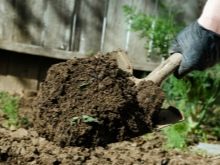

Preparation
If the planting date corresponds to the allowed months in the calendar and a suitable square is selected in the local area, it is possible to proceed to the necessary preparatory measures. The summer resident will need to properly prepare both the soil and the planting material for planting. These are very important stages of agrotechnical work, they cannot be neglected in any case.
The soil
It is necessary to take into account the fact that the land for zucchini must be prepared in advance. This is best done in the fall.The soil must be carefully dug up. At the same time, the depth of the dig should be at least 30 cm. In parallel, the summer resident must apply suitable mineral fertilizers, as well as high-quality organic matter, to each square meter of the beds.
Let's consider what top dressing will be optimal for different types of soils.
- For black soil, the following mixture is suitable: 2 kg sawdust, 30 g superphosphate, 60 g ash.
- On loams you can use a top dressing made up of 2 kg of peat, sawdust and humus. It is also worth making 1 tbsp. l. ash and superphosphate.
- On sandy loam a mixture of 4 kg of humus, peat, sawdust, 30 g of superphosphate and ash will take root well.
- When it comes to peat bogs, then it is advisable to introduce a combination of 2 kg of compost or humus, 2 tbsp. l. ash, 1 tsp. superphosphate and potassium phosphate.
After applying the fertilizing components, the land at the selected place must be leveled with a rake. Also, the soil must be watered with a solution made up of complex fertilizers. Agricola-2 or Rosa mixtures are suitable. The preparation of the soil layer on the territory should not only be autumn. A correct spring procedure is also required, involving the introduction of fertilizing components in the beds. For this purpose, in the spring, the earth is re-dug up, and then each square meter is enriched with 15 g of nitrate.
If the soil in the allocated place is excessively acidic, then it must be additionally limed with ash or lime. The dosage of such fertilizer mixtures directly depends on the acidity level, therefore it is necessary to calculate the dosage based on this important parameter.
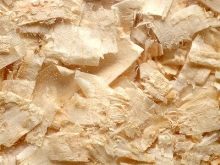
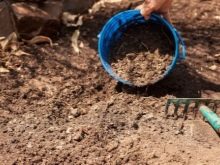

Planting material
Before planting zucchini seeds, it is extremely important to properly prepare not only the soil on the site, but also the seed itself. It is necessary to begin preparatory procedures with the choice of high-quality and healthy seed material. It is possible to purchase seeds of the selected variety or hybrid in a specialized store, or you can collect them from fruits grown on your own on the site.
Good zucchini seeds can easily remain viable for 5-8 years, but they still need to be checked for germination before planting. This should be done in salted liquid. At the same time, the seedlings must be disinfected. To do this, they must be soaked in a pale pink solution of potassium permanganate. Those seeds that float will need to be removed immediately, and for the rest, special mixtures will need to be prepared.
- Almost any formulation can be prepared to stimulate seed growth. Copies of "Humate", "Zircon", "Epin", "Ecosila", "Kornevin" will do. In such mixtures, seedlings must be kept for about 20 minutes.
- It is also allowed to use a solution made from 1 tbsp. l. ash dissolved in 1 liter of warm liquid... In such a mixture, the seeds are usually sufficient to leave for 1-2 days.
When the procedure for soaking the zucchini seeds is completed, they will need to be removed from any mixtures, rinsed with clean liquid, and then wrapped in a moistened cloth piece. Such actions will stimulate seed germination. In this form, they must be left for 3-4 days. In this case, the air temperature should be from 22 to 25 degrees Celsius. The seedlings will be fully prepared for planting in the garden as soon as their small roots reach 1/3 of the length of the seeds themselves.
It also makes sense to pre-harden seedlings of vegetables. Such procedures must be carried out strictly according to the rules. To do this, the seeds of the culture are alternately required to be kept at room temperature, as well as on the lower shelf in the refrigerator for 12 hours. You need to do this for several days in a row.

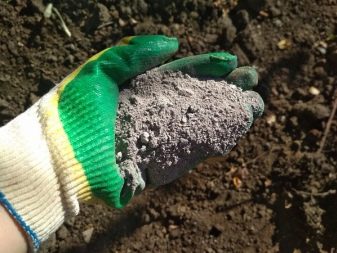
Landing technology
Planting zucchini seeds must be carried out in accordance with a certain scheme and technology. We will understand the main features of the step-by-step implementation of such works in the open field.
- The land in the beds must first be leveled... The best way to do this is to use a simple rake.
- Further in the ground, it is necessary to make deepening... Moreover, they should be at a distance of 50 cm from each other. In the row spacings, gaps of at least 70 cm should be maintained. Leaving more modest distances is strongly discouraged, since if the bushes are too dense, the plants are not able to develop normally.
- Some summer residents believe that planting schemes for zucchini seedlings, according to which it is necessary to leave up to 1 m in the rows, and 1.5 m in the row spacing, will be more correct.
- Notches for planting zucchini must be done with a depth of no more than 4 cm, when it comes to heavy and clayey lands. If the soil is crumbly sandy, then here you can make holes with a depth of up to 7 cm. In each of such holes, you must add a handful of humus and ash. These components are mixed with the soil, after which 1-2 seeds should be placed in the center. The latter are watered with warm liquid, and earth is sprinkled on top.
- As soon as the zucchini seedlings sprout, only 1 plant will need to be left in the hole... All the rest will need to be removed or carefully dug up and transplanted to another place on the site.
Sowing zucchini in the garden is easy, the main thing is to maintain the necessary distances, use suitable fertilizing.
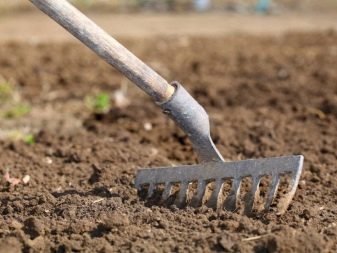
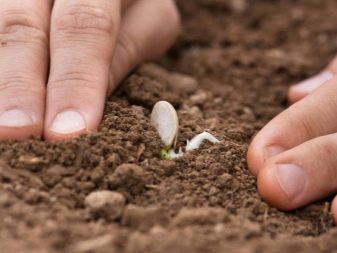
How to care?
Freshly planted and sprouted zucchini necessarily require proper care. The summer resident will need to make timely and regular watering, feed the plants, and loosen the soil. Watering zucchini is recommended in the evening or morning. Warm water is best for this. Watering is not allowed in the middle of the day of planting, because the water will quickly evaporate, leaving the crops and soil mixture dry.
In the first days after the emergence of seedlings, planting will need to be watered daily, using water in small portions. As soon as the vegetables grow so much that the leaves of neighboring bushes begin to close, the irrigation scheme is changed. Further, they need to be watered daily only in hot weather, and in cool weather - every 1-2 days. Zucchini is recommended to be fed mainly with organic compounds. Before the formation of the first flowers, 2-3 additional dressings should be made in the form of infusions from fresh mullein or weeds. To get a brighter effect, mineral and organic mixtures can be alternated.
As soon as the ovaries are formed, the zucchini will need to be fertilized with another mixture. To prepare it, you will need to combine a bucket of 100% slurry, 200 g of ash, 15 g of superphosphate. These components must be thoroughly mixed, then pour 1 liter under each bush. Foliar top dressing can also be used. They are carried out during the general fruit setting by means of "Bud" or "Rossa" products.
It is advisable to do loosening after each perfect watering of the crop. Due to this, the rhizomes receive more oxygen. At the same time, all weeds should be removed both under the bushes and in the aisles... Otherwise, the weeds will drown out the vegetables, taking away all the necessary food from them. Artificial pollination of zucchini is also worth doing.
A similar agrotechnical technique is necessary if rainy or cool weather is established in the yard, and there are no bees. To do this, very carefully take a male flower, on which there are no ovaries. The petals are removed from him, after which they gently touch the middle of the female flowers.
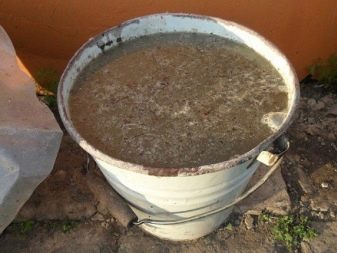

Plants may need to be treated to protect them from all sorts of diseases and insects... The first treatment must be carried out as soon as the seedlings of the zucchini reach the age of one week. They should be sprayed with a mixture of copper oxychloride. For the next processing, you should prepare a mixture of 1% Bordeaux liquid. Instead of it, Topsin or Baleiton preparations are suitable.It is worth applying these components at the stage of foliage development.
The plants in question very often attract various parasites and insects, causing very serious harm to them. The summer resident needs to deal with such problems correctly and in a timely manner, so as not to be left without a high-quality and healthy crop. In order for dangerous whiteflies and aphids to bypass useful plants, the following effective means can be used:
- Aktara;
- Metaphos;
- "Decis";
- "Commander";
- Phosphamide.
It is necessary to use any of the listed funds strictly according to the instructions. The latter, as a rule, is indicated on the branded packaging with the product. Experimenting with such strong drugs is strongly discouraged - this can seriously harm vegetable plantings in the beds.
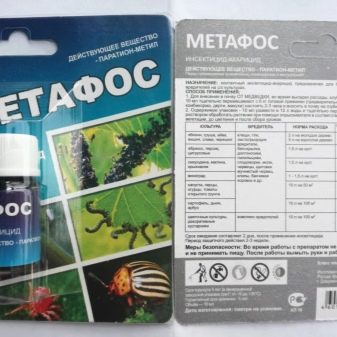














The comment was sent successfully.